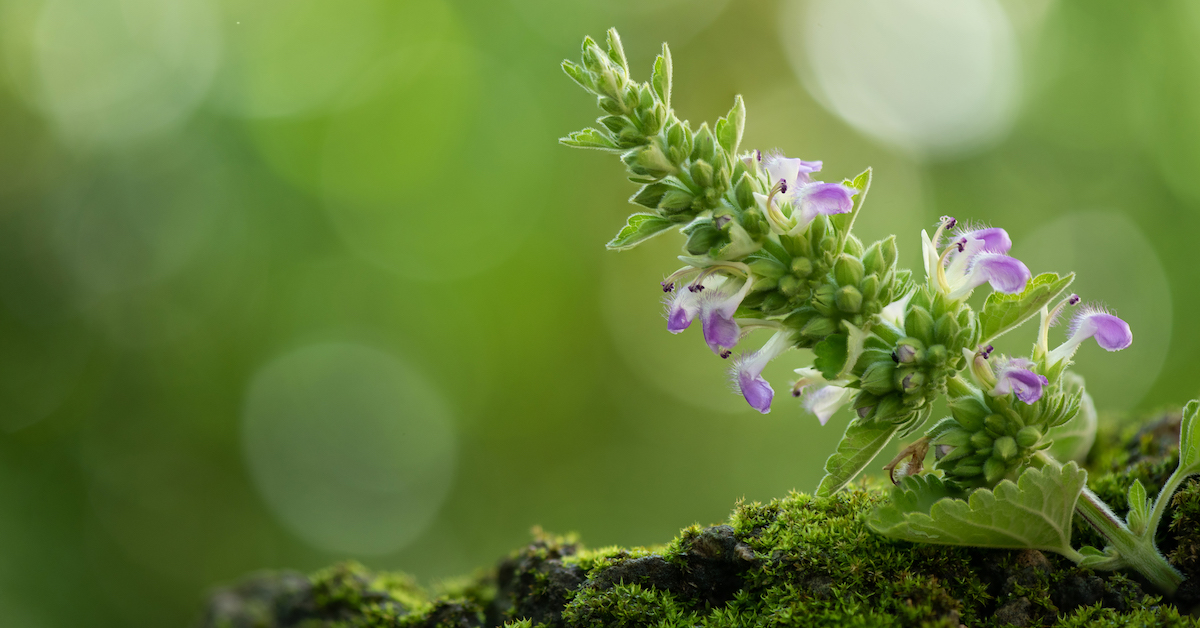The Do’s and Don’ts of Catnip
Catnip can be a healthy treat for your pet when offered in moderation.

There’s something about catnip that drives felines crazy. Nepeta cataria, otherwise known as catnip, is a perennial herb of the mint family native to Asia and Europe. The active ingredient in catnip is nepetalactone, a substance to which domestic cats respond in a variety of ways. According to The Humane Society of the United States, cats typically inherit sensitivity to catnip and an estimated 50 percent of cats do not react at all.
If your cat does enjoy catnip, it’s important to familiarize yourself with the plant, the best ways to give it to your cat, and how to avoid the adverse effects of this herb. Here’s a look at some important do’s and don’ts of catnip.
Do’s of Catnip
Do Recognize the Signs of Catnip Sensitivity
Approximately one in three cats have a sensitivity to catnip, meaning your new pet may or may not enjoy the catnip toys and treats you purchased. You can start to recognize this sensitivity in cats around three months of age. Cats may react to catnip in a variety of ways, such as by rolling, rubbing, flipping, or ultimately zoning out. Some cats may become hyperactive or even aggressive. These “sessions” tend to last about 10 minutes before your cat loses interest.
Do Give Catnip as a Treat
Many cats enjoy the occasional treat and for cats who are sensitive to catnip, a catnip treat may be just what your pet needs to improve its day. Catnip can be a healthy treat for cats when given in moderation. There are several ways that you can give your cat catnip, such as with a toy sprayed with liquid catnip or dried catnip leaves sprinkled in your cat’s favorite area.
Do Offer Only a Small Amount to Your Cat
Like all good things in life, treats like catnip should only be offered in moderation. Start by offering your cat just a small amount to see how he responds. Too much catnip can cause cats to develop diarrhea or vomiting. Consult with your vet about the optimal amount to offer your cat based on age, size, and other considerations.
Do Store Catnip in a Safe Place
Cats can be mischievous creatures and are known to get in places where they don’t belong. Although most cats will stop consuming catnip when they’ve had enough, some cats may overdo it, resulting in upset stomach and other ailments. To prevent the adverse effects of catnip, keep it in a safe place where your cat cannot easily access it.
Do Use the Live Plant Over Liquid Options
While liquid catnip will do in a pinch, it’s better to have the live plant. The liquid spray does not generally contain enough nepetalactone which is what causes the euphoric response in cats. You can find fully-grown catnip plants at most pet stores, allowing you to grow them at home in a pot or planter. If you decide to purchase smaller amounts of catnip, you can keep the extra in the freezer to maintain its potency.
Do Use Catnip to Encourage Play
If you’re having a hard time getting your cat to play, catnip may do the trick. Try introducing catnip in your cat’s favorite interactive toys or climbing towers. When your cat engages in play, he becomes more relaxed and happier. Regular exercise also helps to burn off your pet’s excess energy.
Do Look for USA-Grown Catnip
When shopping for catnip products, look for catnip that is labeled USDA-certified organic. This type of catnip is considered safest for cats as it has been strictly regulated and is free of harmful pesticides. Always do your research before giving your pet any type of treat to ensure that it does not contain any dangerous ingredients that could pose a danger to your cat.
Don’ts of Catnip
Don’t Give Your Cat Catnip Too Often
You may be tempted to give your cat catnip often to see their response and to make them happy. However, it’s important not to offer this treat too often. Ideally, cats should receive catnip no more than a few times per week. Over time, too much catnip can build up in your pet’s system, resulting in an intolerance.
Don’t Give Catnip to Aggressive Cats
Some cats are known to act aggressive when exposed to catnip. Your cat may become grumpy or irritated with people or other animals in the home. Due to a drop in their inhabitations, you may find your cat bullying other pets or engaging in poor behavior that they wouldn’t ordinarily do while not “intoxicated.” If this sounds like your cat, avoid giving your pet catnip.
Don’t Throw Away Old Catnip Toys
If your cat has a catnip toy that is dirty or has sat around too long, don’t be tempted to simply throw it away. It is possible to wash a catnip-infused toy which will also rejuvenate the potency of the catnip. Wash the toy with warm or cool water in the washing machine and allow it to air dry.
Catnip has been found to stimulate the pleasure-seeking pheromones in a cat’s brain, often causing the feline to experience a hyperactive session, often followed by a crash. When used properly, catnip can be a safe and affordable treat for your pet and you can even grow it at home. Keep in mind that the fresher the catnip, the greater the plant’s potency.
Ready to start saving money on pet wellness care?
Then take a look at Mint Wellness, the pet wellness plan that provides fast reimbursement on routine pet care. Save on vaccinations, wellness exams, preventatives, dental, and more!
Learn More


